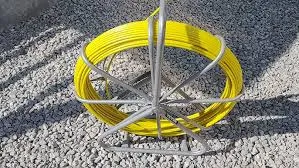
-
 Afrikaans
Afrikaans -
 Albanian
Albanian -
 Amharic
Amharic -
 Arabic
Arabic -
 Armenian
Armenian -
 Azerbaijani
Azerbaijani -
 Basque
Basque -
 Belarusian
Belarusian -
 Bengali
Bengali -
 Bosnian
Bosnian -
 Bulgarian
Bulgarian -
 Catalan
Catalan -
 Cebuano
Cebuano -
 Corsican
Corsican -
 Croatian
Croatian -
 Czech
Czech -
 Danish
Danish -
 Dutch
Dutch -
 English
English -
 Esperanto
Esperanto -
 Estonian
Estonian -
 Finnish
Finnish -
 French
French -
 Frisian
Frisian -
 Galician
Galician -
 Georgian
Georgian -
 German
German -
 Greek
Greek -
 Gujarati
Gujarati -
 Haitian Creole
Haitian Creole -
 hausa
hausa -
 hawaiian
hawaiian -
 Hebrew
Hebrew -
 Hindi
Hindi -
 Miao
Miao -
 Hungarian
Hungarian -
 Icelandic
Icelandic -
 igbo
igbo -
 Indonesian
Indonesian -
 irish
irish -
 Italian
Italian -
 Japanese
Japanese -
 Javanese
Javanese -
 Kannada
Kannada -
 kazakh
kazakh -
 Khmer
Khmer -
 Rwandese
Rwandese -
 Korean
Korean -
 Kurdish
Kurdish -
 Kyrgyz
Kyrgyz -
 Lao
Lao -
 Latin
Latin -
 Latvian
Latvian -
 Lithuanian
Lithuanian -
 Luxembourgish
Luxembourgish -
 Macedonian
Macedonian -
 Malgashi
Malgashi -
 Malay
Malay -
 Malayalam
Malayalam -
 Maltese
Maltese -
 Maori
Maori -
 Marathi
Marathi -
 Mongolian
Mongolian -
 Myanmar
Myanmar -
 Nepali
Nepali -
 Norwegian
Norwegian -
 Norwegian
Norwegian -
 Occitan
Occitan -
 Pashto
Pashto -
 Persian
Persian -
 Polish
Polish -
 Portuguese
Portuguese -
 Punjabi
Punjabi -
 Romanian
Romanian -
 Russian
Russian -
 Samoan
Samoan -
 Scottish Gaelic
Scottish Gaelic -
 Serbian
Serbian -
 Sesotho
Sesotho -
 Shona
Shona -
 Sindhi
Sindhi -
 Sinhala
Sinhala -
 Slovak
Slovak -
 Slovenian
Slovenian -
 Somali
Somali -
 Spanish
Spanish -
 Sundanese
Sundanese -
 Swahili
Swahili -
 Swedish
Swedish -
 Tagalog
Tagalog -
 Tajik
Tajik -
 Tamil
Tamil -
 Tatar
Tatar -
 Telugu
Telugu -
 Thai
Thai -
 Turkish
Turkish -
 Turkmen
Turkmen -
 Ukrainian
Ukrainian -
 Urdu
Urdu -
 Uighur
Uighur -
 Uzbek
Uzbek -
 Vietnamese
Vietnamese -
 Welsh
Welsh -
 Bantu
Bantu -
 Yiddish
Yiddish -
 Yoruba
Yoruba -
 Zulu
Zulu


Sep . 19, 2024 02:27 Back to list
35mm earth cable
Understanding 35mm² Earth Cable Importance, Applications, and Specifications
When it comes to electrical installations, the choice of cables plays a pivotal role in ensuring safety, efficiency, and durability. Among the various types of cables, the 35mm² earth cable stands out for its high conductivity and reliability. This article delves into the characteristics, applications, and significance of a 35mm² earth cable in electrical systems.
What is a 35mm² Earth Cable?
The term 35mm² refers to the cross-sectional area of the conductor, which in this case is 35 square millimeters. Earth cables are designed to provide a safe pathway for fault currents, ensuring that any stray electric discharge is effectively grounded. This prevents potential hazards such as electric shocks, equipment damage, and fires. Typically made from copper or aluminum, the 35mm² earth cable is specifically utilized in a variety of electrical and construction applications due to its robust performance.
Applications of 35mm² Earth Cable
The 35mm² earth cable is widely used in commercial, industrial, and residential settings. Here are some key applications
1. Grounding Systems In electrical installations, grounding systems are crucial to ensuring the safety of both personnel and equipment. The 35mm² earth cable is capable of handling significant fault currents, making it suitable for grounding various electrical networks.
2. Transformers and Generators These components often require robust earthing systems to protect against unexpected electrical faults. The insulation and conductivity of a 35mm² earth cable make it ideal for this purpose.
3. High-Power Equipment Industries that use heavy machinery or high-power equipment, like manufacturing and construction, rely on 35mm² cables. These cables can effectively ground powerful electric currents, minimizing risks associated with electric shocks.
35mm earth cable

4. Telecommunication Installations In telecommunication setups, grounding is vital for protecting sensitive equipment from lightning strikes and surges. The 35mm² earthing cable provides the necessary reliability.
Specifications and Installation Considerations
When selecting a 35mm² earth cable, several specifications need to be considered
- Material Copper is preferred for its superior conductivity, but aluminum can also be an option, often available at a lower cost. - Insulation The insulation type must be chosen based on environmental conditions. For high moisture environments, cables with specialized insulation may be required.
- Standards Compliance Ensure that the cable adheres to national and international electrical codes and standards, which govern the safety and performance of electrical installations.
During installation, it is crucial to follow best practices to ensure effectiveness. This includes using proper connectors, avoiding sharp bends, and securing cables adequately to prevent mechanical stress.
Conclusion
The 35mm² earth cable serves as a vital component in maintaining electrical safety across various industries. Its ability to handle substantial fault currents and durability under different environmental conditions makes it a top choice for grounding applications. Understanding its specifications and applications can help ensure a safe and efficient electrical system, providing peace of mind for users and professionals alike. When considering electrical installations, the use of a well-suited earth cable like the 35mm² is essential in safeguarding against electrical hazards.
Latest news
What Are Construction Tools and How Are They Used?
NewsJul.11,2025
Professional-Grade Duct Rodding Tools for Superior Cable Installation
NewsJul.11,2025
Enhancing Safety and Efficiency with Modern Hot Stick Solutions
NewsJul.11,2025
Empowering Cable Installation with Advanced Rodder Solutions
NewsJul.11,2025
Elevate Your Cable Installation Projects with Cable Pulling Tools
NewsJul.11,2025
Efficient Cable Handling Solutions: Cable Rollers for Sale
NewsJul.11,2025











